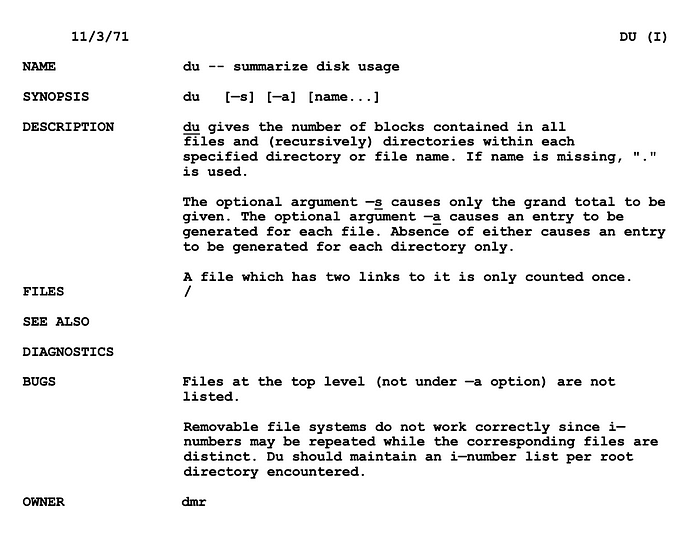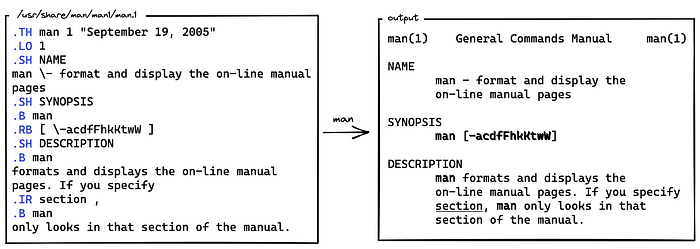

The Origins Of Man
source link: https://sebastiancarlos.com/the-origins-of-man-89ad9ecbd9e6
Go to the source link to view the article. You can view the picture content, updated content and better typesetting reading experience. If the link is broken, please click the button below to view the snapshot at that time.
The Origins Of Man

Photo by Patrik Michalicka on Unsplash
“Man page” is a short term for “manual page.” It’s a well known form of software documentation usually found on UNIX operating systems.
Linux users frequently use the “man” command to learn about different tools, but few actually know where it came from.
The Beginning
While it’s usual to think of man pages as something you read on a screen, its origins lay in the physical world of printing.
The oldest ancestor of man pages is a program called RUNOFF from the legendary CTSS operating system. The name RUNOFF comes from the idiomatic expression “run off,” meaning “to print or make a photocopy.” It’s one of the earliest text formatting (or “typesetting”) programs.

RUNOFF was one of a pair of programs, TYPSET and RUNOFF, designed by Jerome Saltzer in 1964 to format his doctoral thesis. TYPSET was used to create and edit the source text files, which contain English text and some control words to describe formatting instructions (justification, alignment, and so on). RUNOFF would print out the formatted text, excluding the control words.
The Birth of Markup Languages
If the idea of a file containing both natural-language and specific formatting commands sounds a lot like a “markup language” like HTML, LaTeX, or Markdown, that’s because it is. In fact, RUNOFF and other early text formatting programs are the origins of markup languages.

The non-standard <center> is used for comparison with RUNOFF, but modern markup languages usually differentiate between semantics and presentation.
The word “markup” comes from the millennial art of “marking up” a manuscript, which involves adding handwritten printing instructions in the margins.
From RUNOFF to troff/groff

RUNOFF was eventually rewritten as roff (1971) for UNIX. Notably, “roff” was used to format the first edition of the UNIX Manual, which had a similar structure to the man page layout used today.

Page from the first edition of the Unix Programmer’s Manual (1971)
Next came nroff (new roff), which supported both printing and displaying on terminals. Then troff (typesetter roff) was developed, featuring proportional fonts and other advanced features used in state-of-the-art photographic typesetters.
Although troff was eventually replaced by other programs and markup languages, it is still used to format UNIX documentation, and some people continue to use it for other tasks due to its reliability and widespread availability.
The GNU troff (groff) is considered the most popular troff variation in modern UNIX installations.
Summary
In short, man pages are written in the troff markup language — A tradition that started with the first edition of the UNIX manual.

For further information, check the History of UNIX Manpages.
Recommend
About Joyk
Aggregate valuable and interesting links.
Joyk means Joy of geeK